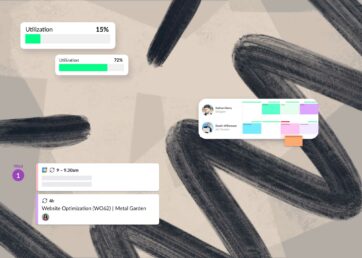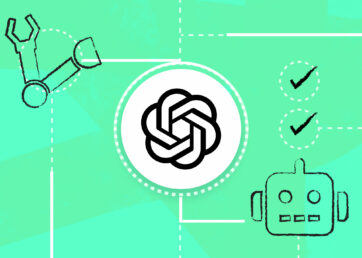No matter how experienced you are, handling any project is a challenge. When you’re responsible for ensuring the objective is met and the end result is delivered, it’s exciting and maybe even a little scary. But, you can handle it by staying in control … which means you need a methodology.
So, what is a methodology? (That’s the approach, right?)
A project methodology is a framework for guiding the planning, design, and implementation of the tasks required to deliver a project’s objective.
Methodologies serve as a roadmap or template; they help you plan how to schedule your resources, communicate with your team, and track task completion—but they aren’t necessarily interchangeable. Choosing the wrong approach could add needless headaches and delays, so it’s important to know which kind of project you have and which methodologies are a good fit.
In this article 📖
There’s a methodology for everyone
It’s impossible to have one approach that’s both simple enough and complex enough to meet every possible situation. Herein lies the first challenge for a project manager.
Picking a methodology boils down to two options:
- Choosing an off-the-shelf methodology
- Creating a hybrid out of two or more methodologies.
As project manager, it’s your job to evaluate which path will be most effective, meaning you need to understand how the characteristics of your project, product, business, and team will ultimately align with a particular approach.
Choosing an off-the-shelf project methodology
Standardized methodologies are known for having loyal followers, especially in some industries. At the top of the popularity list are four that famously hog the limelight, and for good reason: they are highly transferable and can be molded to fit projects in numerous fields.
Waterfall: “Structured and sequential”
Arguably the most well-known, the waterfall project methodology is designed to be simple and logical—a common sense, sequential plan. Each phase of tasks must be completed in order, meaning the project can’t move on the next phase until it’s done with the one before.
Waterfall is great if you’d like to have increased control. That said, it can also be highly inflexible if the scope changes or if issues are discovered late in the project (such as discovering in testing that the product that doesn’t match the design).
Waterfall has the following key features:
- Ideal for projects needing locked down requirements and high levels of control
- Highly sequential; each stage is dependant on completion of the former
- Typically comprises 5–7 stages, such as requirements gathering, design, implementation, testing, and maintenance phases
- Suitable for numerous industries; favored in construction and software development
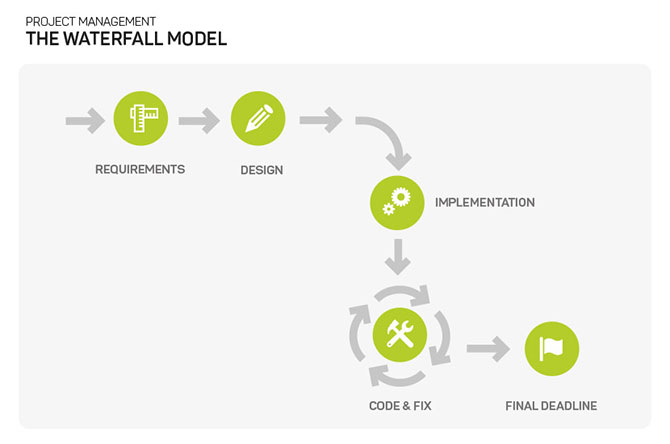
Agile: “Flexible, product-centric, incremental delivery”
More flexible than waterfall, the agile methodology was designed to overcome issues caused by changes to requirements during waterfall projects.
Work is completed in short bursts (or “sprints”) that produce incremental, functioning versions of a product. This allows a team to be more responsive to situational needs, such as scope changes or discovery of complications that must be fixed.
Sprints are tested by the project team and demo’d to the customer, who may or may not request alterations. Because of this, the end product may be very different from what was initially envisaged.
Agile has the following key features:
- Very flexible to change
- Team works in short and intense production cycles
- Each cycle results in a functioning, enhanced version of the product
- Low levels of initial documentation required
- Customer is usually involved in the creation of the product and instrumental to any change
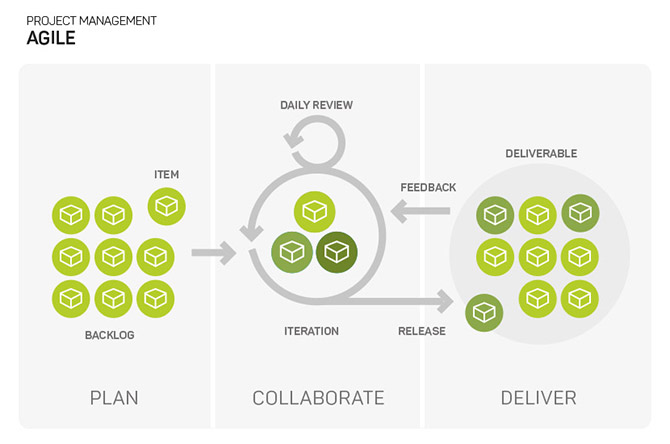
PRINCE2: “Complex, highly structured, and document heavy”
Used extensively by the UK Government in the private sector for large scale, big budget projects, PRINCE2 is the daddy of control and structure. It gives project managers more control than anyone should ever want or need.
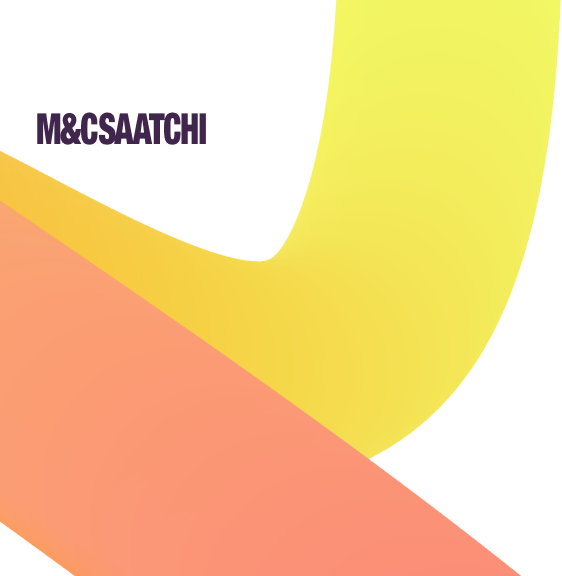

“Resource Guru is simple to use. It allows us to optimize our resources and keeps an eye on every project.”
The PRINCE2 (an acronym for PRojects IN Controlled Environments) methodology has a flexibility that can, in theory, be tailored to suit any project. Its focus is on the business justification driving the project, meaning the requirements for its existence and how it should be produced. It emphasizes dividing the project into stages.
PRINCE2 has the following key features:
- Product-based planning approach
- Highly adaptable, with flexible decision points
- Known for its defined structure and documentation
- Continually confirms that the project has a business justification
- Regular reviews of progress against the plan and the business case
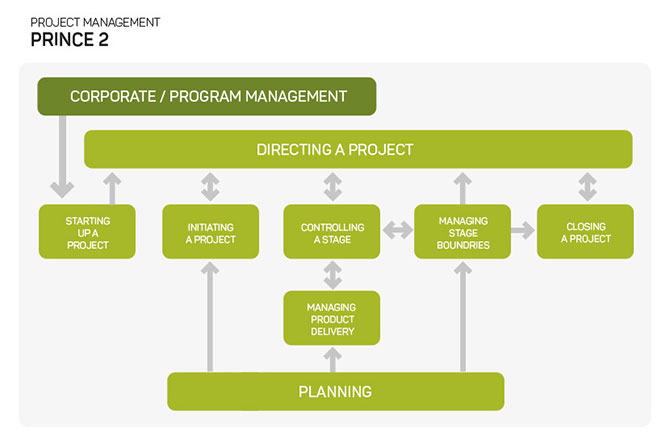
Kanban: “Simple visual display of task tracking”
Kanban visually displays project tasks according to status, progressing from left to right. It produces continuous, incremental and evolutionary changes in a way that minimizes the strain on teams. The simplest “kanban board” is divided into three sections and tasks are moved from “To Do” to “In Progress” and finally “Recently Completed.” (More sections can be included.)
This simple display makes it easy for project teams to see the status of all tasks in a highly condensed manner, though it could become unwieldy for large teams or highly complex projects.
Kanban has the following key features:
- Great for small teams and projects
- Simple visual display of the project tasks and their status
- Ideal for software development, but has many other uses
- Works well when there are one-off or unrelated tasks
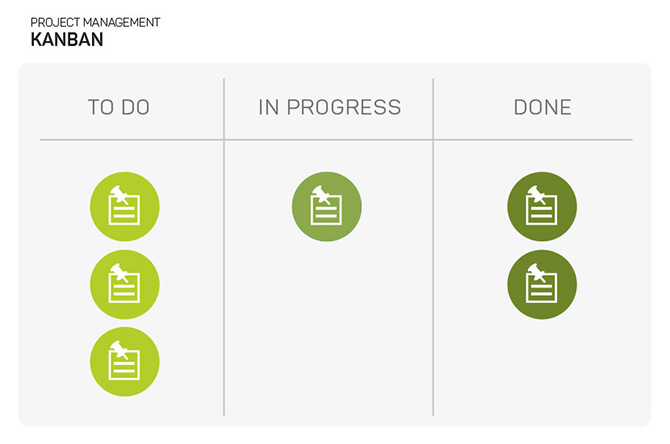
Investigate other popular project methodologies
Project managers looking for that “perfect” approach have created an extensive assortment of custom methodologies over the years. By blending techniques to suit your project, you can make a hybrid of your own—but first make sure to check out a few others that are well-loved!
- Scrum
- Six Sigma
- Rapid Applications Development
- Total Quality Management
- The System Development Life Cycle
Did you see an off-the-shelf methodology that fits your project like a glove? If you’ve found an approach that’s appropriate for your team, stakeholders, product, and budget … yay! Go run with it!
Whichever methodology you choose, at some point you’ll need to actually carry out the work. Choosing the right resource planning software can be the difference between project failure and “mission accomplished.” Resource Guru gives you clear visibility of your team’s schedule, preventing overbookings and setting your project up for success :)
Graphics: Duncan Watts, Designer at Blueleaf




